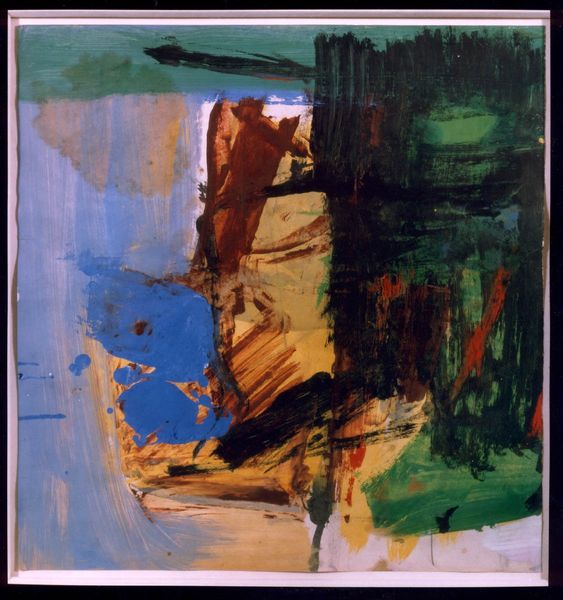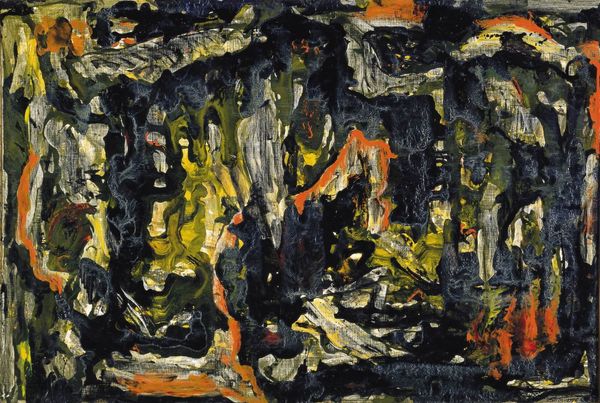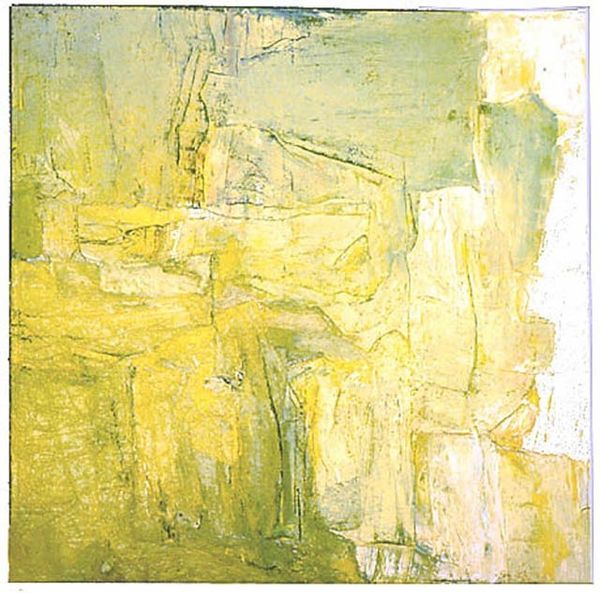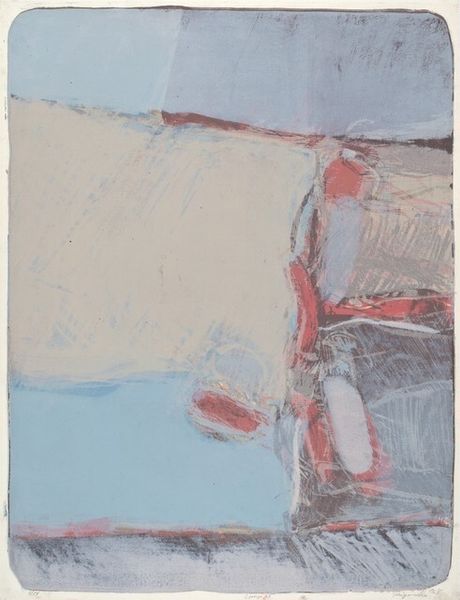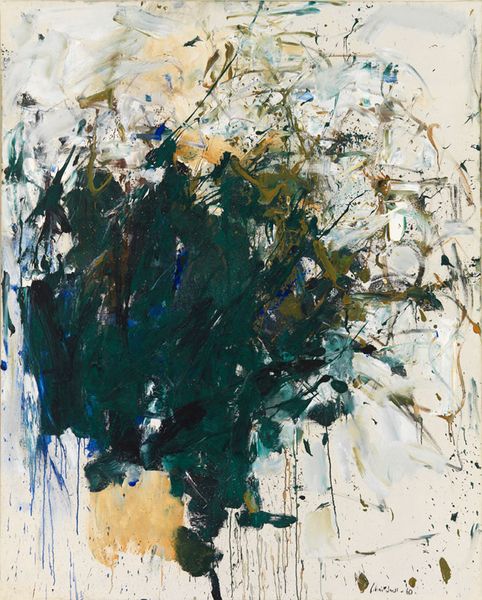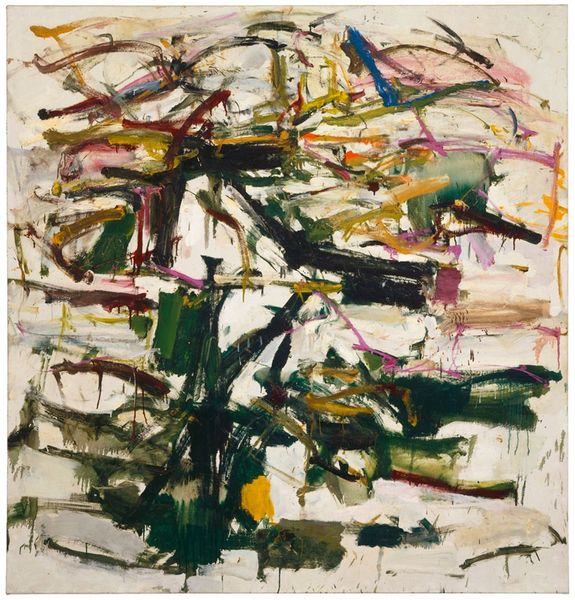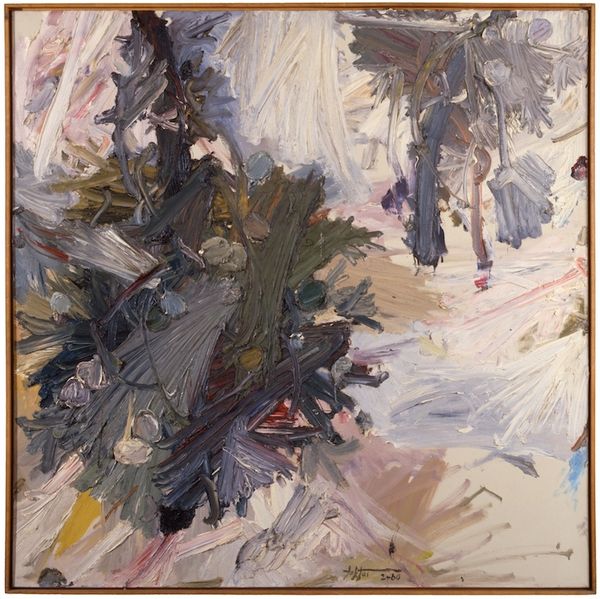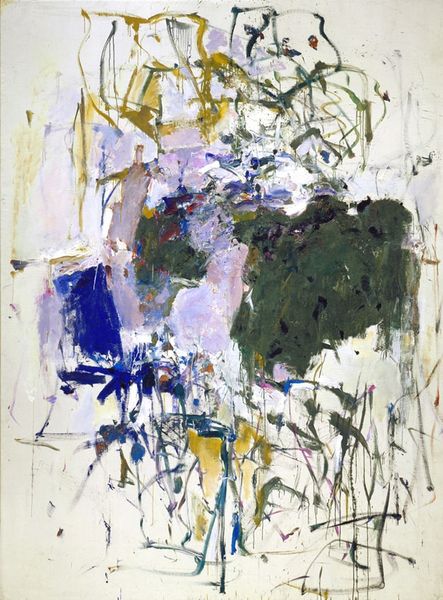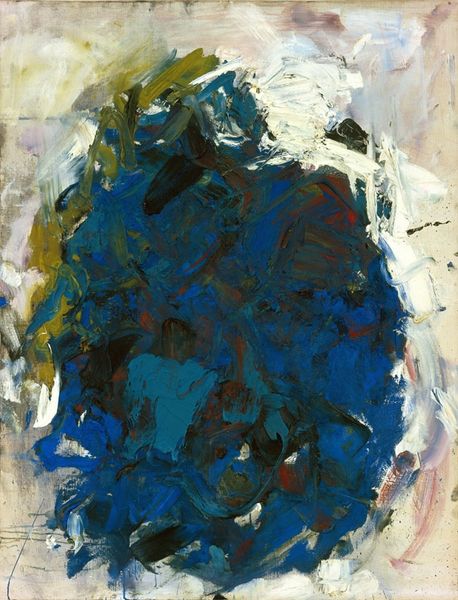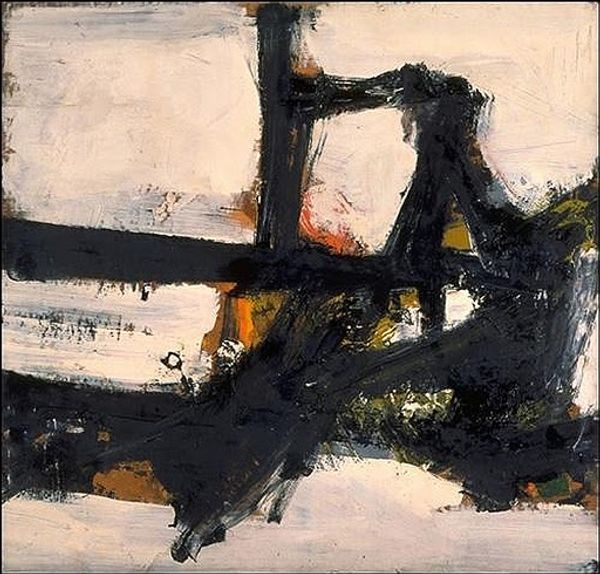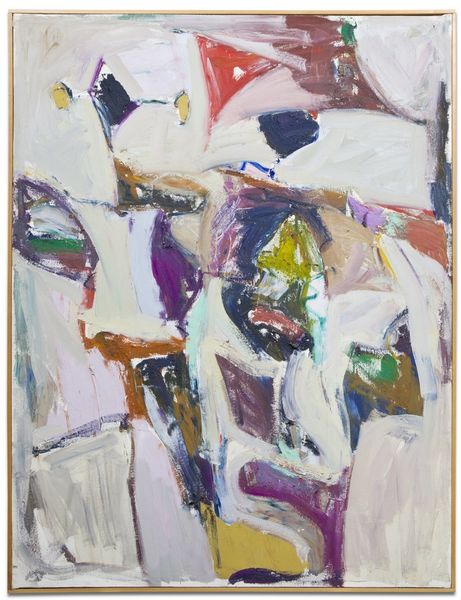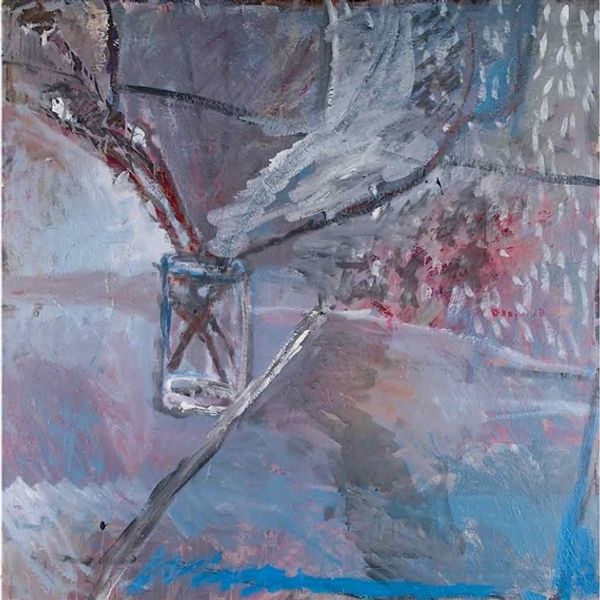
Copyright: Frank Auerbach,Fair Use
Curator: Standing before us, we have Frank Auerbach’s “Head of Paula Eyles,” completed in 1972. The work is executed in oil paint, built up with incredibly thick impasto. Editor: My immediate sense is tension. The heavy paint application almost obscures the subject. It feels like a struggle to emerge from the canvas. Curator: That feeling of tension is central to Auerbach's process. He obsessively reworked his canvases, scraping down layers only to rebuild them, striving for a true representation. This arduous technique mirrors the intensity he sought in his portraits. The cultural milieu of post-war London heavily shaped this intensity as Auerbach, who escaped Nazi Germany as a child, sought a renewed vocabulary through painting. Editor: That explains the emotional weight. Knowing Auerbach's personal history adds a layer of trauma and resilience to this work. And looking closer, there's a fascinating contradiction – the frenzied application of paint almost veils this woman, while there's also an undeniable tenderness present. How did his sitters respond? Curator: Eyles, like many of his sitters, visited his Camden studio weekly, sometimes for years. Auerbach described the sittings not so much about likeness as seeking truth through the act of painting itself. The art market and patronage of this work is an interesting study too, as Auerbach maintained a distance to institutional and gallery recognition to some extent. His patrons were London individuals that followed him across time. Editor: The art world tends to isolate art historical study from broader socio-political struggles. But situating Eyles and Auerbach within London's dynamic historical art circles provides context for identity, gender and representation. How did that daily performance of observation between painter and model disrupt conventions? Curator: I think, what seems clear here is Auerbach didn't necessarily strive to disrupt, but to reveal. Ultimately, this painting allows us to contemplate art’s ability to register emotional depth through materiality. Editor: Precisely, and to ponder the multifaceted histories imbued in a single portrait, especially within the wider intersectional narratives surrounding trauma, exile and re-presentation.
Comments
No comments
Be the first to comment and join the conversation on the ultimate creative platform.
